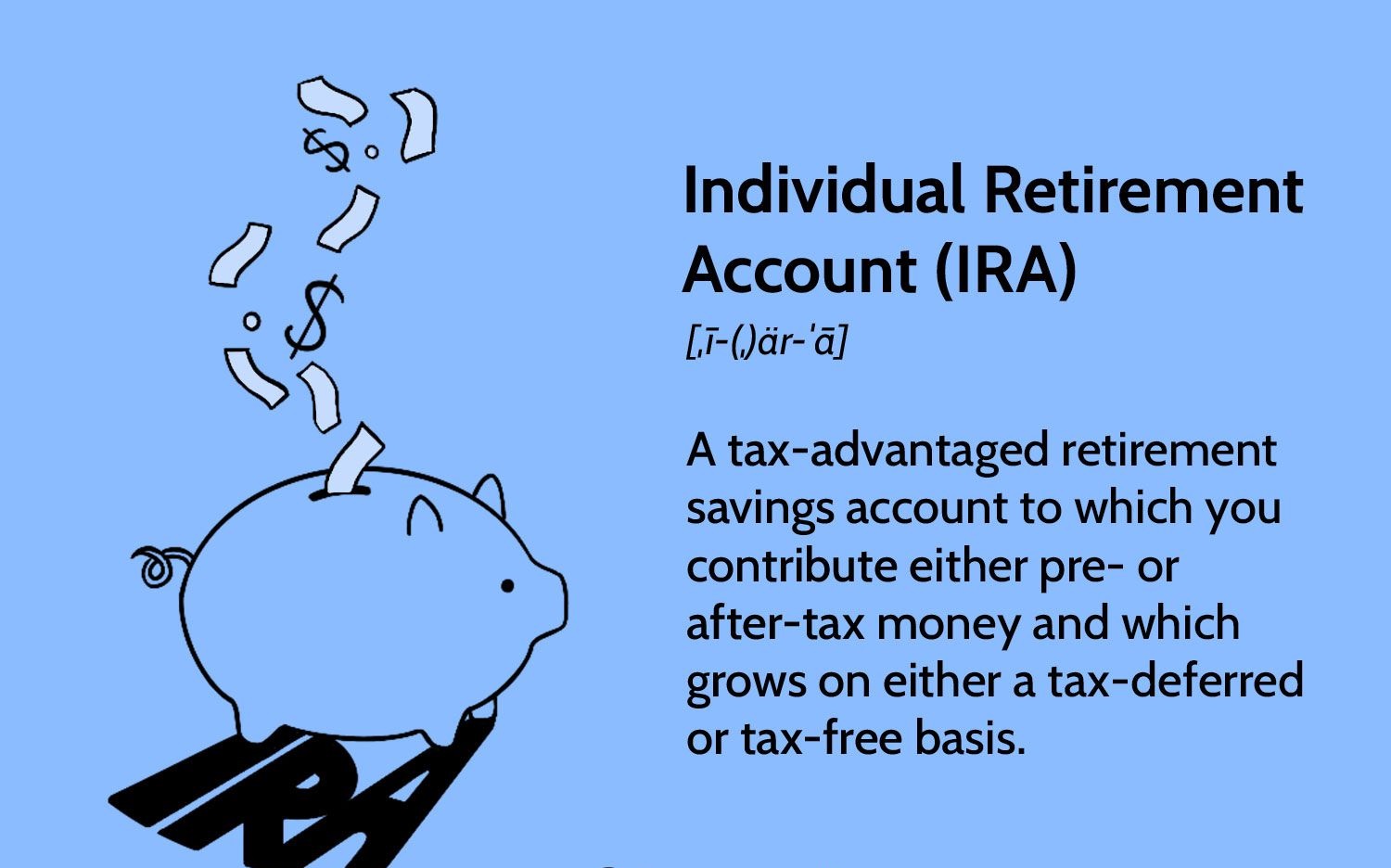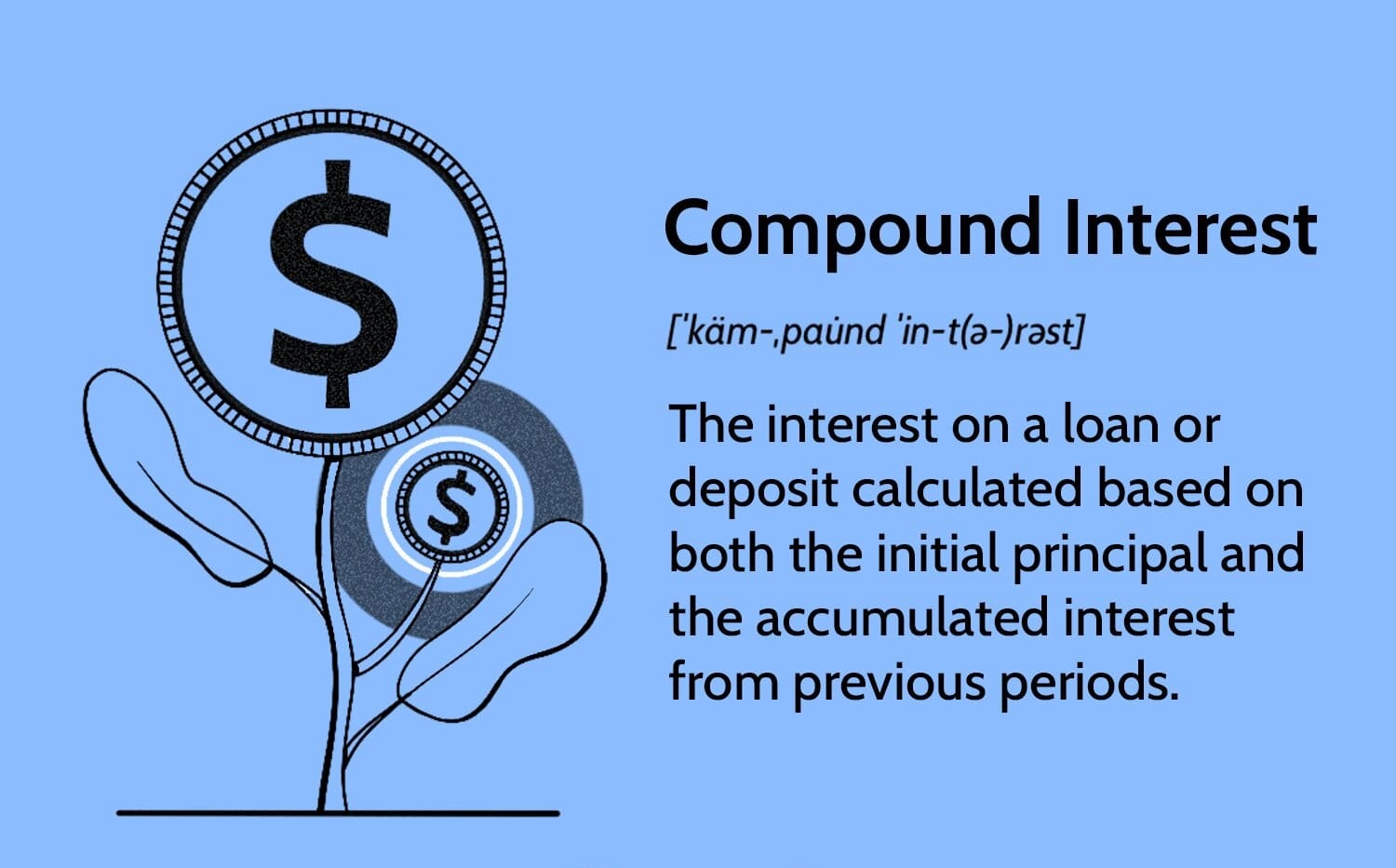Introduction
Investing in an Individual Retirement Account (IRA) is a smart financial move for securing your future. IRAs offer tax advantages and opportunities for growth, allowing you to build a nest egg for retirement. However, it’s essential to understand that not all types of investments are allowed within an IRA. The Internal Revenue Service (IRS) sets specific guidelines to ensure that IRAs are used for retirement savings and not for speculative or prohibited activities.
When it comes to investing in an IRA, it’s crucial to know which types of investments are not allowed. Making prohibited investments can have severe consequences, including significant tax penalties and potential disqualification of your IRA. By familiarizing yourself with these restrictions, you can make informed investment decisions while maximizing your retirement savings potential.
In this article, we will explore various types of investments that are prohibited within an IRA. By understanding these limitations, you can navigate your investment strategy accordingly and avoid costly mistakes that could jeopardize your retirement funds.
Real Estate
One commonly misunderstood investment that is not allowed in an IRA is direct ownership of real estate. While real estate can be a lucrative investment, the IRS prohibits IRA funds from being used to purchase or directly invest in rental properties, commercial buildings, or residential homes. However, this does not mean that real estate cannot play a role in your IRA portfolio.
There are alternative ways to include real estate in your IRA. One option is to invest in real estate investment trusts (REITs) or exchange-traded funds (ETFs) that focus on real estate. These investment vehicles allow you to indirectly invest in a portfolio of properties, providing the potential for real estate appreciation and income.
Another option is a self-directed IRA, which allows you to have more control over your investment choices. With a self-directed IRA, you can invest in a wider range of assets, including real estate. However, it’s crucial to follow the IRS guidelines and work with a custodian experienced in self-directed IRAs to ensure compliance.
It’s important to note that while real estate may be an attractive investment, it can also come with risks such as market fluctuations and property maintenance. Before considering real estate as an investment within your IRA, it’s advisable to consult with a financial advisor who specializes in retirement planning to assess whether it aligns with your investment goals and risk tolerance.
Collectibles
Investing in collectibles may be a passion for some, but it’s not permissible within an IRA. The IRS considers collectibles, such as artwork, rugs, antiques, stamps, coins, and even certain types of precious metals, as prohibited investments. The rationale behind this restriction is to prevent individuals from using their retirement funds for personal enjoyment or hobbies.
While collectibles can hold sentimental value and may appreciate in price over time, they do not provide the same level of liquidity and stability as traditional investment options. Additionally, determining the value of collectibles can be subjective and speculative, making them unsuitable for retirement savings.
It’s worth mentioning that there are a few exceptions to the rule. For example, certain types of precious metals, such as gold, silver, and platinum bullion coins, are allowed in an IRA, provided they meet specific purity requirements. However, collectible coins with numismatic value do not qualify.
If you have a passion for collectibles, you can enjoy them outside of your IRA by investing personal funds. While they may not contribute directly to your retirement savings, they can still provide personal enjoyment and potential returns outside of the confines of a tax-advantaged retirement account.
As with any investment decision, it’s important to consult with a financial advisor who can help you navigate through the complex rules and regulations surrounding prohibited IRA investments. By understanding the restrictions, you can make informed choices and align your investment strategy with your long-term financial goals.
Life Insurance Contracts
While life insurance can be a crucial financial tool for protecting your loved ones, it is not allowed as an investment within an IRA. The primary purpose of an IRA is to accumulate funds for retirement, and life insurance serves a different purpose altogether.
Life insurance is designed to provide financial support to beneficiaries in the event of the policyholder’s death. It is not intended as an investment vehicle to grow retirement savings. Therefore, the IRS prohibits the purchase of life insurance contracts using IRA funds.
There are certain situations where life insurance policies may be allowed within an IRA, such as when the policyholder has a self-directed IRA and uses it to invest in a life settlement contract. However, these situations are complex and require adherence to strict IRS guidelines.
If you are looking to obtain life insurance coverage, it is advisable to explore separate life insurance policies outside of your IRA. By doing so, you can ensure the proper protection for your loved ones while keeping your retirement savings focused on investments that align with your long-term financial goals.
As always, consult with a knowledgeable financial advisor or tax professional to understand the specific rules and restrictions surrounding life insurance and IRA investments. They can guide you on the most suitable strategies for securing financial security and optimizing your retirement savings.
S-Corp Stock
Investing in S-Corporation (S-Corp) stock is another type of investment that is not allowed within an IRA. S-Corps are a type of business entity that offers certain tax advantages, such as pass-through taxation. However, the IRS prohibits the ownership of S-Corp stock within an IRA due to concerns about control and self-dealing.
One of the main reasons S-Corp stock is prohibited is because it can potentially create conflicts of interest. Since IRAs are intended for the sole purpose of retirement savings and not for active business ownership or management, the IRS aims to prevent potential abuse or improper use of retirement funds.
It’s important to note that while you cannot own S-Corp stock directly within an IRA, you may still indirectly invest in S-Corps through other investment vehicles. For example, you can invest in a mutual fund or exchange-traded fund (ETF) that holds S-Corp stocks, as long as the primary purpose of the fund is not investing in S-Corps themselves.
Before making any investment decisions involving S-Corp stocks or other related investments, it’s crucial to consult with a financial advisor or tax professional. They can guide you on the legal and tax implications and help you make informed decisions that align with your investment goals and retirement strategy.
Understanding the restrictions on S-Corp stock within an IRA can help you make appropriate investment decisions and avoid potential penalties or disqualification of your IRA. By working with a knowledgeable professional, you can navigate the complexities of IRA investing and make choices that will optimize your retirement savings.
Tangible Personal Property
Investing in tangible personal property, such as jewelry, vehicles, or precious collectibles, is not allowed within an IRA. The IRS prohibits the ownership of these types of assets within an IRA due to their potential for personal use or enjoyment.
The purpose of an IRA is to provide tax advantages and facilitate long-term retirement savings. Tangible personal property does not align with this objective and is therefore deemed a prohibited investment.
While you cannot directly invest in tangible personal property within an IRA, there are alternative ways to include these assets in your overall investment strategy. For example, you can utilize personal funds to purchase and own these assets outside of your retirement account.
It’s important to note that the IRS has specific guidelines regarding what qualifies as tangible personal property. Items such as jewelry, artwork, and vehicles generally fall under this category. However, certain precious metals, like gold, silver, and platinum bullion, may be allowable if they meet specific purity requirements.
If you have a passion for collecting or investing in valuable personal assets, it’s essential to factor these investments into your overall financial plan but separate them from your IRA. By doing so, you can enjoy the potential benefits of these assets while keeping your retirement savings focused on suitable investment options.
As with any investment decision, consult with a financial advisor or tax professional to ensure compliance with IRS regulations and to make informed choices that align with your unique financial goals and retirement strategy.
Precious Metals
Precious metals, such as gold, silver, platinum, and palladium, have long been recognized as a store of value and a hedge against inflation. While these metals can be a sound investment choice, there are certain rules and restrictions when it comes to holding them within an IRA.
When it comes to investing in precious metals within an IRA, the IRS allows for the inclusion of specific types of bullion or coins, provided they meet certain requirements. For example, gold, silver, and platinum bullion coins issued by the United States Mint may be allowable if they meet specific purity standards.
On the other hand, certain collectible or rare coins that have numismatic value are not eligible for inclusion in an IRA. These coins are considered to have additional value based on their rarity, historical significance, or condition, rather than their intrinsic metal value.
To invest in precious metals within an IRA, you will likely need to work with a custodian or trustee who specializes in precious metals investments. They can guide you through the process and ensure compliance with the IRS guidelines.
It’s important to note that while precious metals can provide diversification and potential protection against market volatility, they should be considered as part of a broader investment strategy. The value of precious metals can fluctuate over time, and they may not generate income or dividend payments like other investment options.
Before making any decisions regarding precious metal investments within an IRA, it’s advisable to consult with a financial advisor who can provide guidance based on your specific financial goals and risk tolerance.
By understanding the rules and regulations surrounding precious metals investments in an IRA, you can make informed choices that align with your overall investment strategy and retirement objectives.
Antiques
Collecting antiques can be a fascinating hobby, but it is important to note that investing in antiques is not permitted within an IRA. The IRS prohibits the ownership of antiques as an investment within retirement accounts due to their subjective value and potential for personal enjoyment.
Antiques, such as furniture, artwork, and historical artifacts, are often valued for their uniqueness, historical significance, or craftsmanship. However, their value can be highly speculative and can vary widely based on factors such as condition, scarcity, and market demand.
While you cannot directly invest in antiques within an IRA, you can still enjoy collecting them outside of your retirement account. If you are passionate about antiques and wish to invest in them, you can do so using personal funds or through other investment vehicles, such as partnerships or private collections.
It’s important to remember that investing in antiques can be risky, as their value can be unpredictable and highly dependent on market trends. Additionally, storing and maintaining antiques can come with additional costs and risks, such as damage, theft, or loss.
As with any investment decision, it is crucial to consider your long-term financial goals and consult with a financial advisor to ensure that your investments align with your overall retirement strategy. They can provide guidance on suitable investment options and help you make informed decisions based on your risk tolerance and investment objectives.
While antiques may not be eligible for inclusion in an IRA, they can still bring joy and satisfaction as part of your personal collection and serve as a potential legacy to pass down to future generations.
Gems
Gems, such as diamonds, rubies, emeralds, and sapphires, can be valuable and alluring. However, investing in gems is not allowed within an IRA. The IRS prohibits the ownership of gems as an investment within retirement accounts due to concerns regarding the valuation, liquidity, and personal enjoyment associated with these assets.
Gems are unique and highly subjective in value, making them difficult to evaluate and potentially speculative as investments. Additionally, the market for gems can be relatively illiquid compared to other investment options, which may make it challenging to convert them into cash when needed.
While you cannot directly invest in gems within an IRA, you can still enjoy collecting them outside of your retirement account. If you are passionate about gems and wish to invest in them, you can do so using personal funds or explore other investment avenues, such as gem-focused funds or partnerships.
It’s important to understand that investing in gems comes with risks and considerations. Valuing gems accurately requires expertise and knowledge of various factors, including the 4 Cs (cut, color, clarity, and carat weight) and market trends. Additionally, securely storing and insuring your gemstone collection is crucial.
Consulting with a gemstone expert and a financial advisor can help guide your investment decisions and ensure that your gemstone investments align with your overall financial goals. They can provide insights into gemstone market trends, pricing, and authentication, helping you make informed choices.
While gems may not be suitable for inclusion in an IRA, they can serve as a source of personal enjoyment and potential legacy as part of your personal collection.
Remember to approach gemstone investments with careful consideration, conducting thorough research and seeking professional advice to make informed decisions that align with your financial objectives and risk tolerance.
Stamps
Stamp collecting is a popular hobby that has fascinated collectors for generations. However, investing in stamps is not allowed within an IRA. The IRS prohibits the ownership of stamps as an investment within retirement accounts due to concerns about their subjective value, limited market liquidity, and potential for personal enjoyment.
Stamp values can vary widely based on factors such as rarity, condition, and historical significance. The subjective nature of stamp collecting makes it challenging to determine a reliable market value, which is crucial for investment purposes. Additionally, the market for stamps can be relatively niche and illiquid, making it difficult to convert stamps into cash quickly.
While stamps cannot be directly invested in through an IRA, stamp collecting can still be enjoyed as a personal hobby or outside of your retirement account. Collecting stamps can bring joy, satisfaction, and historical knowledge as you explore the world of philately.
If you are passionate about stamp collecting and wish to invest in stamps, you can do so using personal funds or explore other avenues such as stamp-focused funds or partnerships. It’s essential to approach stamp investments with caution and consult with experts in the field to ensure you are making informed decisions based on a thorough understanding of the market.
When considering stamp investments, keep in mind that stamp values can be influenced by various factors, including market trends, changes in collecting preferences, and condition fluctuations. Working with an experienced stamp dealer or a knowledgeable financial advisor can provide valuable insights and assistance in assessing the potential investment opportunities within the stamp collecting world.
Remember that while stamps may hold sentimental and historical value, they should be considered within the context of personal enjoyment and broader investment strategies outside of retirement accounts.
Consulting with experts and professionals in stamp collecting can help you make informed decisions, refine your collection, and explore potential investment opportunities that align with your interests and financial goals.
Fine Wines
Fine wines have long been a symbol of luxury and sophistication, but investing in wines is not allowed within an IRA. The IRS prohibits the ownership of fine wines as an investment within retirement accounts due to concerns about their subjective value, limited market liquidity, and potential for personal enjoyment.
Wine values can fluctuate depending on factors such as vintage, producer, region, and critical acclaim. The subjective nature of wine appreciation makes it challenging to determine a consistent market value for investment purposes. Additionally, the market for fine wines can be relatively illiquid, with limited buyers and sellers, making it difficult to convert wine assets into cash when needed.
While investing in fine wines within an IRA is not permitted, you can still enjoy collecting and investing in wines outside of your retirement account. If you are passionate about fine wines and wish to invest in them, you can do so using personal funds or explore other avenues such as wine-focused funds, partnerships, or wine cellaring services.
When investing in fine wines, it is vital to have knowledge and understanding of the wine market. It’s also essential to consider factors such as proper storage, insurance, and authentication to maintain the value and quality of your collection.
Working with experienced wine merchants, wine investment funds, or consulting with wine-specific financial advisors can help you navigate the complexities of wine investments and optimize your investment decisions.
It’s important to approach wine investments with caution and recognize that wine collecting and investing can come with risks, including market volatility, variations in wine quality, and potential for fraud. As with any investment, conducting thorough research, seeking professional advice, and diversifying your portfolio are essential aspects of managing wine investments.
While fine wines can provide pleasure, cultural experience, and potential appreciation over time, they should be considered as part of a broader investment strategy outside of retirement accounts.
As with any investment decision, consulting with wine experts and financial professionals can provide valuable insights and guidance to help you make informed choices that align with your financial goals and risk tolerance.
Rare Coins
Rare coin collecting can be a fascinating hobby that combines numismatic history with potential investment opportunities. However, investing in rare coins is not allowed within an IRA. The IRS prohibits the ownership of rare coins as an investment within retirement accounts due to concerns about their subjective value, potential for personal enjoyment, and risks associated with the rare coin market.
Rare coins, particularly those with historical significance, limited mintages, or exceptional condition, can hold significant value among collectors. However, determining the value of rare coins can be subjective and speculative, making them unsuitable for retirement savings within an IRA.
While you cannot directly invest in rare coins within an IRA, you can still enjoy collecting them outside of your retirement account. Collecting rare coins can provide a rewarding hobby and potential investment avenue using personal funds.
When investing in rare coins, it is important to have a thorough understanding of numismatics, coin grading, historical context, and the rarities within the market. Working with reputable coin dealers, numismatic experts, or coin-specific investment funds can provide valuable insights and guidance to help you make informed decisions.
It’s worth noting that rare coins can be subject to market fluctuations, and liquidity can be limited due to the specialized nature of the market. Understanding the various factors that affect rare coin values, such as rarity, demand, condition, and historical significance, is crucial when considering them as an investment asset.
When engaging in rare coin collecting or investing, ensure proper authentication, storage, and insurance to preserve the value of your collection. Engaging with coin-related organizations and staying informed about numismatic news and trends can also help in making better investment choices.
While rare coins may hold historical and collectible value, it’s important to consider them within the context of personal enjoyment and as a potential addition to a diversified investment portfolio outside of retirement accounts.
Seeking advice from coin experts and financial advisors who specialize in rare coin investments can provide invaluable guidance to navigate the complexities of the rare coin market and optimize your investment decisions.
Artwork
Artwork has long been appreciated for its aesthetic and cultural value. However, investing in artwork is not allowed within an IRA. The IRS prohibits the ownership of artwork as an investment within retirement accounts due to concerns about its subjective value, potential for personal enjoyment, and potential for tax evasion.
Artwork can be highly subjective and difficult to value accurately. Factors such as artist reputation, medium, condition, provenance, and market demand all influence the value of artwork. The subjective nature of art appreciation makes it challenging to determine an objective market value, making it unsuitable for retirement savings within an IRA.
While you cannot directly invest in artwork within an IRA, you can still enjoy collecting and investing in artwork outside of your retirement account. Collecting artwork can bring aesthetic pleasure, cultural enrichment, and potential investment opportunities using personal funds or through specialized art-focused investment vehicles.
When considering artwork investments, it is important to conduct thorough research, seek expert advice, and diversify your portfolio. Working with art advisors, auction houses, reputable dealers, and art investment funds can provide valuable guidance on navigating the art market and making well-informed investment decisions.
Investing in artwork requires careful consideration and understanding of the risks involved, such as potential fluctuations in market demand and the costs associated with insurance, storage, and authentication. Additionally, the art market may have limited liquidity compared to other investment options.
It’s worth noting that investing in artwork should be approached with a long-term perspective, as art values may appreciate over time but can also be subject to market fluctuations. Thorough due diligence, understanding the art market, and working with professionals can help mitigate risks and increase the potential for successful art investments.
While artwork can provide visual enjoyment and potential investment returns, it is important to consider them within the context of personal enjoyment, aesthetic enrichment, and as an additional asset class within a diversified investment portfolio outside of retirement accounts.
Consulting with art experts, financial advisors, and tax professionals can provide valuable insights and guidance to help you make informed choices that align with your financial goals and risk tolerance in the art investment market.
Alcoholic Beverages
Investing in alcoholic beverages, such as wine, whiskey, or other spirits, is not allowed within an IRA. The IRS prohibits the ownership of alcoholic beverages as an investment within retirement accounts due to concerns about their potential for personal enjoyment, durability, and difficulty in establishing their true value.
Alcoholic beverages, particularly rare or collectible wines and spirits, can hold cultural significance and may appreciate in value over time. However, their subjective nature and potential for personal enjoyment make them unsuitable for retirement savings within an IRA.
While you cannot directly invest in alcoholic beverages within an IRA, you can still appreciate and collect them outside of your retirement account for personal enjoyment or potential investment opportunities using personal funds.
If you are interested in investing in alcoholic beverages, it’s important to consider the risks and challenges associated with this market. Factors such as origin, producer reputation, quality, rarity, and market demand all affect the value of alcoholic beverages.
Investing in alcoholic beverages requires knowledge and understanding of the market, including trends, authentication, storage, and provenance. Engaging with reputable wine merchants, whiskey specialists, or auction houses can provide insights and guidance in making informed investment decisions.
It’s important to note that alcoholic beverages, particularly wines and spirits, require proper storage conditions and careful handling to maintain their quality and value over time. Additionally, liquidity in the alcoholic beverage market can be limited, limiting the ability to convert these assets into cash quickly.
When considering alcoholic beverages as an investment, it’s essential to approach them as a part of a diversified investment portfolio, balancing the potential for returns with other investment options.
Remember that the primary purpose of an IRA is to provide retirement savings and tax advantages. Investing in alcoholic beverages should be done with personal funds and understanding that they provide pleasure and potential appreciation, but have limitations and risks as investment assets.
Seeking advice from experts in the alcoholic beverage market, financial advisors, and tax professionals can provide valuable insights and guidance to help you make informed decisions, aligning your investment choices with your financial objectives and risk tolerance in this specialized investment area.
Violation of Prohibited Transactions
Understanding and complying with the rules regarding prohibited transactions within an IRA is crucial to maintain the tax-advantaged status of your retirement account. The IRS has specific guidelines in place to prevent certain activities and transactions that could jeopardize the tax benefits associated with IRAs.
Engaging in prohibited transactions with your IRA can result in severe tax penalties and potentially disqualify your account. It’s essential to be aware of these restrictions and avoid any actions that may violate them.
Some common examples of prohibited transactions within an IRA include:
- Self-Dealing: Engaging in transactions that directly benefit yourself, your family members, or certain other disqualified persons. This includes using IRA funds to purchase personal assets, lend money to yourself or a disqualified person, or using IRA-owned property.
- Prohibited Investments: Investing in assets that are not allowed within an IRA, such as collectibles, real estate (except under specific circumstances), life insurance contracts, S-Corp stock, and certain types of precious metals.
- Excessive Contributions: Making contributions to your IRA that exceed the annual maximum limits set by the IRS, or making contributions to a traditional IRA after reaching the age of 70 ½.
- Prohibited Borrowing: Taking a loan from your IRA or using your IRA as collateral for a loan.
- Disqualified Person Transactions: Engaging in transactions with certain disqualified individuals, such as your spouse, parents, children, grandchildren, or a fiduciary of your IRA.
It’s important to note that some prohibited transactions might have exceptions or specific circumstances where they may be allowed. Consulting with a financial advisor or tax professional who specializes in retirement accounts can provide clarity on the rules pertaining to prohibited transactions and help you navigate the complexities of IRA regulations.
By adhering to the IRS guidelines and ensuring compliance with prohibited transaction rules, you can avoid costly penalties and maintain the tax advantages associated with your IRA. Regularly reviewing and monitoring your IRA transactions and investments is essential to identify and rectify any potential violations.
Understanding the consequences of prohibited transactions and seeking expert advice when in doubt is crucial for protecting your retirement savings and maximizing the benefits of your IRA.
Conclusion
Investing in an Individual Retirement Account (IRA) is a powerful tool for building a secure financial future. However, it’s important to be aware of the types of investments that are not allowed within an IRA to ensure compliance with IRS regulations and preserve the tax advantages associated with these accounts.
In this article, we explored various types of investments that are prohibited within an IRA, including real estate, collectibles, life insurance contracts, S-Corp stock, tangible personal property, precious metals, antiques, gems, stamps, fine wines, rare coins, artwork, and alcoholic beverages. While these investments may hold value and potential for appreciation, they are not suitable for holding directly within an IRA due to concerns about valuation, liquidity, personal enjoyment, or potential abuse of retirement funds.
Understanding the restrictions and limitations on prohibited investments within an IRA is essential to make informed investment decisions that align with your long-term financial goals. It’s important to consult with a financial advisor or tax professional who specializes in retirement planning to ensure compliance with IRS guidelines and to navigate the complexities of investment options.
While certain types of investments may be prohibited within an IRA, there are alternative ways to include them in your overall investment strategy. For example, you can invest indirectly in real estate through real estate investment trusts (REITs) or explore self-directed IRA options for more flexibility. Similarly, you can enjoy collecting antiques, gems, stamps, or fine wines outside of your retirement account using personal funds.
Investing wisely within an IRA requires careful consideration and diversification. It’s crucial to evaluate your risk tolerance, investment goals, and time horizon when constructing your portfolio. By seeking professional advice, conducting thorough research, and staying informed about market trends, you can make prudent choices that support your financial objectives while staying within the guidelines set by the IRS.
Remember, the purpose of an IRA is to provide a tax-advantaged vehicle for retirement savings. While specific investments may be prohibited within an IRA, they can still play a role in your overall investment strategy outside of your retirement accounts.
As with any investment decision, it’s important to regularly review and monitor your portfolio, adjust your strategy as needed, and stay informed about any updates or changes to IRS regulations.
By understanding the rules and limitations surrounding prohibited investments within an IRA, you can make informed choices that align with your long-term financial goals and help secure a comfortable retirement.

























